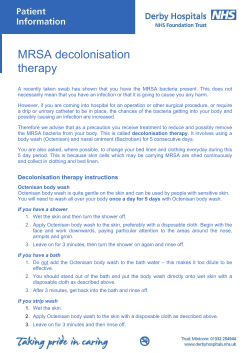
Dry, Rough and Scaly heels?
Dry, Rough and Scaly heels? Do you suffer from dry and cracked heels? Are your heels rough and scaly? Feet are the part of the body that receive the most wear and tear during the day. The average person takes 8,000 to 10,000 steps every day which means that during our lives we cover about 185,000 kilometres. Dryness of the skin on the foot, especially the heel is a very common phenomenon, mainly among women. In a recent study involving 750 women, 76% described their heels as ‘very dry’, ‘rough’ and ‘scaly’. It should be noted that the number of dry skin cases in women with is higher than in men. However, dry, rough and cracked heels can be treated. What is Xerosis and how is it caused? Dry skin (xerosis) is a condition in which the outer layer of the skin (keratin layer), is unable to retain moisture and water is lost as water vapour (transdermal water loss). This is either the result of an insufficiency of the cells in the keratin layer, or the result of a deficiency in the lipids that occupy the space between the cells. The ideal concentration of water of the keratin layer is 20-30% by weight. If this concentration falls below 10% it results to obvious dryness of the skin with unpleasant results (scaling, itching, superficial cracking, roughness etc.). Also in connection with dry skin, it should be noted that the concentration of natural hydrating agents in the skin (i.e Urea, Lactic acid, etc) is limited. Dryness of the skin may be due to external factors (cold, heat, low humidity, the use of hard soaps etc) and/or endogenous factors (diabetes mellitus, thyroid gland disorders, menopause, renal failure, psoriasis, atopic dermatitis and other medical conditions).15-20% of the population suffers from xerosis with the number of women sufferers being higher than men. On the whole, dryness appears most frequently on the legs. Dry, cracked heels are very troublesome. Its main characteristic is roughness and thickening of the skin on the heel and superficial cracking due to excessive dryness. Cracks on the heels may harbour bacteria and this may result in inflammation. During periods of hot weather feet require special care because open shoes (sandals, mules) make the problem even worse. Is there any Therapy for Dry Cracked heels? When you discover even slight dryness, you should treat it using a special ointment (persons who suffer from diabetes mellitus should visit their doctor immediately). Most people try to deal with the problem of dry heels using hydrating lotions and creams. However, these products are not specially formulated for the skin of this area, which is 3-5 times thicker than the skin on the rest body. Consequently, results are poor. LacUreX οintment is the solution. 1 What is LacUreX? LacUreX ointment is an innovative hydrating ointment, especially manufactured for problem areas of the skin with a tendency of exhibiting excessive dryness. We should mention that apart from cracked, dry skin, dermatologists also recommend it for treating hyperkeratosis (thickening of the keratin layer). LacUreX contains, among other ingredients, urea and lactic acid in high concentrations, two natural hydrating agents, in a specially formulated ointment which has the ability to penetrate the thick, harsh skin of the heel. LacUreX acts in three ways: a) It retains moisture in the epidermis, replenishing urea and lactic acid levels. b) It repairs the physical barrier of the skin thus eliminating moisture loss through the epidermis c) It reduces the thickness and softens and smoothes the skin. Essential to the efficacy of the product is the fact that lactic acid (in the concentration found in LacUreX cream) is the leading hydrating factor most frequently recommended by Dermatologists for the treatment of dry skin and the third most frequently recommended by Pharmacists in the USA. How is LacUreX applied? A small amount of LacUreX should be applied locally, with a gentle massaging action, until it is completely absorbed, 2-3 times a day (depending on the severity of dryness). Results are obvious in 1-2 weeks. If satisfactory results are obtained with LacUreX, it may also be used on other parts of the body where there is dry skin (with the exception of the face). When the desired results are achieved, maintain them by using Aquathenol PLUS cream. LacUreX may rarely cause, in a very small number of cases, mild and transient skin reactions including mild irritation and itching. These phenomena disappear after the first few days of use of the product. If, however, you can’t tolerate these reactions, continue the treatment with Saotex PLUS ointment. LacUreX is specially formulated and it does not contain scent in order to avoid allergic reactions. CONCLUSION LacUreX ointment is an innovative hydrating ointment specially designed to penetrate the skin of dry and scaly heels. The multi-role and “powerful” combination of active ingredients and the frequent use of LacUreX (morning-evening): Efficiently hydrates the epidermis Drastically reduces the loss of moisture through the epidermis Reduces the thickness and ‘softens’ the ‘harsh’ skin of the soles, especially the heels Notice: LacUreX is not a medicine and it cannot substitute medical treatment. If you know or suspect that a medical condition is the cause of your skin dryness you should immediately visit a Dermatologist. If dry skin appears in a patient with diabetes mellitus, he or she should immediately visit his or her doctor. 2
© Copyright 2025















